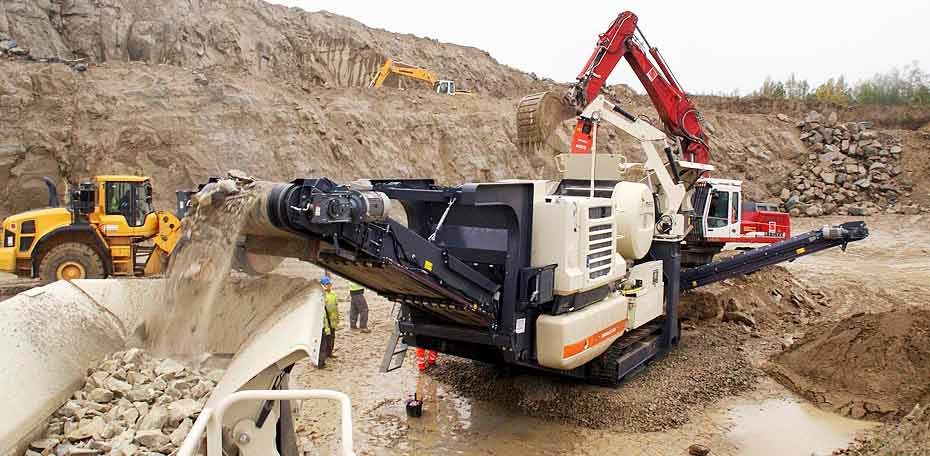Key points
• ‘Aggregate’ is a term for any particulate material. It includes gravel, crushed stone, sand, slag, recycled concrete and geosynthetic aggregates. Aggregate may be natural, manufactured or recycled.
• Aggregates make up some 60 -80% of the concrete mix. They provide compressive strength and bulk to concrete.
• Aggregates in any particular mix of concrete are selected for their durability, strength, workability and ability to receive finishes.
• For a good concrete mix, aggregates need to be clean, hard, strong particles free of absorbed chemicals or coatings of clay and other fine materials that could cause the deterioration of concrete.
• Aggregates are divided into either ‘coarse’ or ‘fine’ categories.
- Coarse aggregates are particulates that are greater than 4.75mm. The usual range employed is between 9.5mm and 37.5mm in diameter.
- Fine aggregates are usually sand or crushed stone that are less than 9.55mm in diameter.
• Typically the most common size of aggregate used in construction is 20mm. A larger size, 40mm, is more common in mass concrete.
• Larger aggregate diameters reduce the quantity of cement and water needed.

20 mm aggregate
Common aggregates
• Crushed Stone and Manufactured Sand

Stone is quarried, crushed and ground to produce a variety of sizes of aggregate to fit both ‘coarse’ and ‘fine’ specifications.
• Gravel

Gravel is formed of rocks that are unconnected to each other. The Wikipedia entry explains that ‘Gravel is composed of unconsolidated rock fragments that have a general particle size range and include size classes from granule- to boulder-sized fragments.’
• Sand
Sand occurs naturally and is composed of fine rock material and mineral particles. Its composition is variable depending on the source. It is defined by size, being finer than gravel and coarser than silt.
• Lightweight Aggregates

Vermiculite

Glass aggregate
Lightweight aggregates can be from natural resources, or they can be man-made. The major natural resource is volcanic material whilst synthetic aggregates are produced by a thermal the thermal treatment of materials with expansive properties.
These materials can be divided in three groups—natural materials, such as perlite, vermiculite, clay, shale, and slate; industrial products, such as glass; and industrial by-products, such as fly ash, expanded slag cinder, and bed ash.
(read more about recycled aggregates)
• Recycled Concrete

Recycled concrete is created by breaking, removing, and crushing existing concrete to a preferred size. It is commonly used as a base layer for other construction materials.
Recycled concrete can be used as aggregate in new concrete, particularly the coarse portion. When using the recycled concrete as aggregate, the following should be taken into consideration:
• Recycled concrete as aggregate will typically have higher absorption and lower specific gravity than natural aggregate and will produce concrete with slightly higher drying shrinkage and creep. These differences become greater with increasing amounts of recycled fine aggregates.
• The chloride content of recycled aggregates is of concern if the material will be used in reinforced concrete. The alkali content and type of aggregate in the system is probably unknown, and therefore if mixed with unsuitable materials, a risk of alkali-silica reaction is possible.
Aggregate extraction
Aggregates are extracted from natural sand or sand-and-gravel pits, hard-rock quarries, dredging submerged deposits, or mining underground sediments.
Rock quarries
The process of extraction from rock quarries usually involves explosives to shift the rock from the working face. Rock is crushed and passed through a series of screens. The output is a range of sizes of rock produced to specified sizes. Crushed rock is transported from quarries by road or rail.
Sand and gravel quarries / ‘pits’

Reflecting the essential nature of the material, sand and gravel quarries, both working and defunct, are a common feature of the UK landscape, particularly in the East of England. Pits are located in areas where glaciers left behind clean deposits of sand and stone. Sometimes the gravel is deeper than the groundwater table and the gravel is extracted through pumping - leaving behind ponds and lakes.
Marine aggregate

Much of today’s seabed was dry land 20, 000 years ago when sea levels were up to 100m lower. After the last Ice Age sea levels began to rise and existing river valleys bearing sand and gravel deposited by glaciers became submerged. Eventually sea levels rose to establish today’s coastline. The former river sediment has been re-worked by the action of the sea to leave clean and well-sorted aggregates.
Between 20 and 30 purpose-built dredging vessels work 24/7 to extract marine aggregate. There are two types of dredging technique:
• Static dredging involves a vessel anchoring over and working a deposit using an electronic pump.
• A pump is trailed behind the vessel along the seabed.
Water

Aggregate washing
Water is critical in the making of concrete. Adding water to the mix sets off a chemical reaction when it comes into contact with the cement. The water used in the mixing of concrete is usually of a potable standard. Using non-drinking water or water of unknown purity risks the quality and workability of the concrete.

More about Concrete:
- Cement: Materials and manufacturing process
- Environmental Impacts of Concrete
- Concrete and Sustainability
- UK Concrete Industry: Sustainable Construction Strategy
- Cement Substitutes
- Exploiting thermal mass
- Specifying for Sustainability
- Specifying Recycled and secondary aggregates
